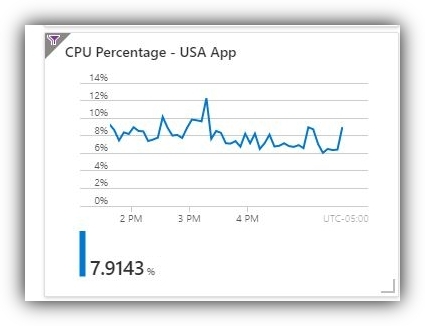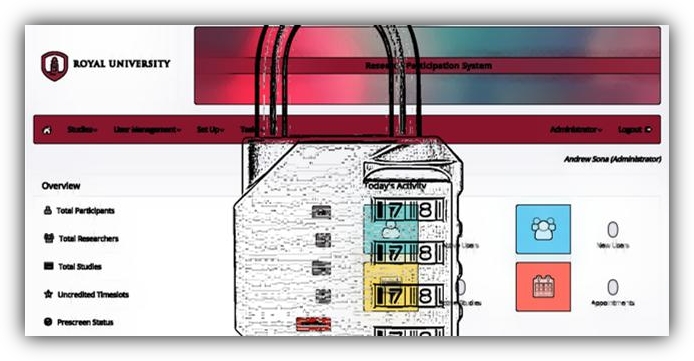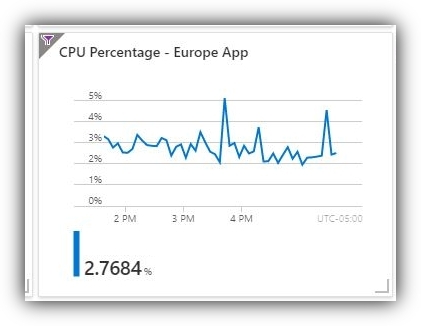
Entering the New Year on a New Cloud
Published February 6, 2023
Sona is starting off 2023 with a much anticipated transition to a new cloud provider. Long anticipated, that is, for us. The move to our new Microsoft Azure cloud provider is something we’ve had in the works for a long time now. For users of Sona sites all around the globe, on the other hand, this announcement is less “anticipated” than it is “breaking news”. It’s also very exciting news (particularly for Sona users), but it may not sound as exciting as it really is. That’s why we thought it would be good to give you some idea of the many benefits this move has for your Sona site. We’d also like to take this time to anticipate the important questions from Sona admin, ranging from inquiries such as “does this mean our Sona site is now hosted on a different continent somewhere that could cause us problems with regulatory compliance?” to those more akin to “Wait…there’s no longer ‘the cloud’ anymore, there are two?” (the answer to both questions, by the way, is “No”). But we can allay many anxieties (and, indeed, replace such anxieties with excitement!) as well as answer many questions just by giving you the reasons behind the move.
With this goal in mind, let’s ask: why the transition? The great thing about this question is that the answer is almost identical to the one we’d give to the question “what are the benefits for Sona users?” To prove it, we’ll now cover some of our cloud transition’s most pertinent perks.
Faster is Better
In Brief:
The switch to a new cloud provider means faster access speeds. In short, your site will load faster for you, your researchers, and your participants (and any other users on your site).
In Greater Detail:
Typically, internet speeds depend upon a variety of factors. As a sole and simple example: even if you build a ultra-super-fast connection using a nonlocal communication channel with EPR steering and superquantum correlations over a zero-entropy fibrous optics neural network, you still won’t get your TI-83 to load webpages quickly. So you may well wonder how we can make such a general claim about improved speeds, given all the different factors that play into this. There are certain assumptions we’re making here, such as that your users are not using dial-up. But barring such extreme cases, we can indeed make such general statements and rest assured they hold true.
One of the main reasons for the increase in speed has to do with the new provider’s larger and superior network. Yes, part of this involves more actual physical locations so that e.g. more remote locations enjoy the benefits of edge computing via hundreds of edge locations. For most users, though, the increased speeds have more to do with the the cloud native architecture that is designed to speed up content delivery, decrease latencies, increase availability, and accelerate your Sona service. It’s not just load times, either. Our new provider uses cutting-edge compression and caching methods for better response times, combined with a core, dedicated high-speed network with state-of-the-art, real-time traffic monitoring for better routing times.
We’ve just scratched the surface here, but the main takeaway won’t change regardless of the detail we go into: We can indeed safely say that the transition to our new cloud provider means faster loading and response times across the board (and globe!). And although it’s oversimplifying a great deal, it comes down greater network and content delivery capacity. That means a faster Sona site experience for you.
We should point out that by “you” here, we don’t just mean Sona administrators, or admin and researchers, for that matter. We mean everyone, and we mean everywhere (that’s where edge computing comes into play, at least in part). In fact, this aspect of the increased speeds (namely, faster loading time) has a lot to do with how our new cloud provider handles your Sona site’s content delivery to users, as opposed to e.g., the kind of data import/export transfers that Sona administrators and sometimes researchers require. We’ll get into some of that below, as a crucial aspect of data handling in that case is security. In fact, that’s a great topic to turn to now!
Security is Essential
In Brief:
Our provider changeover does not come at the expense of security. Far from it. Not only does our new provider offer the same high level of security we required from the previous one, it also offers a highly trained team of over three thousand security experts to maintain this level of security.
In Greater Detail:
This one is a no-brainer: All universities, labs, and organizations want their cloud-based services to be secure. But our obligation and commitment goes beyond protecting your site. We need to know that your participants’ data are safe, that they can feel secure, that your researcher’s can trust in our system’s security, and that review boards & committees the world over can as well. That was true before, and it remains true now. The difference is that in addition to the security measures we’ve always employed, our new service comes with 3,000+ security experts constantly updating and preparing for potential threats. It’s making sure your future security is taken care of in the present.
Of course, a good portion of the protection we offer comes from the nature of our software, the constant checks we do with regulatory bodies around the world, keeping ahead of the curve of research trends and potential ethical concerns, and more. It is by no means limited to server-level cloud security. So any provider we use would still be only one part of the ways our platform protects your site, your data, and your users (certainly your participants, but also your researchers and you yourself!). Even though it’s only one part, the role the provider plays here is still a crucial one. That’s why we made sure this move would mean the same level of security we had with our former cloud provider. And we got it. Yes, some of the implementation and strategies differ, but they differ over time for the same provider anyway. Indeed, it’s the “over time” aspect that really sold us here. That’s how this move really represents a security “improvement”. It isn’t the protection currently implemented. It’s the thousands of experts making sure the high level of security we demand is maintained.
You can think of it a bit like a much grander, larger version of something like security software on your personal computer. Imagine two home computer security software packages we’ll call X and Y (not because we’re unimaginative, but rather because talk of security is no time to conjure up frivolous names). At present, perhaps software X and software Y both offer great antivirus, firewall, malware, and similar protection services. They’re basically equivalent—for now. But threats to security are not static, whether they involve threats to large networks or cloud-based services or a vulnerability to malware on your home computer.
To return to our analogy, the changing nature of security threats translates into things like new viruses and malware exploits that you count on your computer’s security software to protect you from. So even though X package and Y package both currently offer equivalent protection, they may differ in how they offer support and upgrades. If X comes with the assurance from a team of security experts that they will be continually upgrading your software, while Y waits for a problem to actually happen before they release a fix, then X is the better option.
The same is true on a much larger scale with cloud security: What matters is not just the security offered now, but that whatever new threats emerge the provider will be on top of them and the appropriate updates will already be in place. This is what makes the transition to the new provider an improvement. We needed to make sure that our cloud provider’s security included the best experts whose work would be implemented in the form of constant, continual, and evolving threat detection and deterrence.
Security isn’t just something we offer, it’s part of our mission. So something on the order of a small army of security experts seemed appropriate.
Peak time perks
In Brief:
Our new provider adapts automatically to changes in your Sona site’s traffic and allocates resources accordingly. When your site experiences rises in activity, real-time monitoring detects the increase and brings in the necessary additional resources to smoothly handle it. In short, peak times need not slow down your site.
In Greater Detail:
There’s no getting around it: The beginning and end of each semester is a time where everybody needs everything done yesterday. It also means that more participants tend to be logging in, more researchers are spending increased time on the system, and the general usage peaks. This kind of spike in activity can cause slowdowns, and worse still do so at the most inconvenient time!
Our service is all about increasing efficiency and easing the workload, and it’s also cloud-based. So we went out of our way here to make sure our switch to a new provider would mean better handling of peak times. And we’re happy to report, it does!
Failure is not an option
In Brief:
We’ve always provided back-up services to restore your Sona site should anything go wrong. That won’t change. But it will improve! The move to the new provider means more back-ups with increased monitoring so that hardware failures can be detected and corrected for in near real-time.
In Greater Detail:
We’re all familiar (from experience, if nothing else) with the idea that whatever can go wrong will go wrong and often at the worst time. But there’s a long history of building better, more reliable systems by engineering them with this “guarantee” of catastrophic failure in mind. Network hardware will eventually break, data will get corrupted, and someone will drop their magnetized coffee cup full of boiling liquid on some essential server during routine maintenance checks that required the brief removal of the protective shell. The way to guard against these inevitabilities is redundancies. This is perhaps the one time this word means something wholly positive.
We say this because otherwise a statement like “the new cloud provider offers increased redundancies” might raise a few skeptical eyebrows. The term “redundant” usually doesn’t carry very positive connotations. In this instance, though, it’s a good thing. It means that any hardware failures can not only be detected, but the data restored through back-ups. That’s essentially what “redundancies” means here: The provider constantly stores “redundant” copies of your data in the event of any issues or hardware failures. If disaster strikes, failures are detected and handled automatically by the provider, and previously “redundant” data used to restore service so quickly you wouldn’t notice unless you were really looking for it (and probably not even then).
This is more than just the ability to restore your data or an earlier build of your site. Yes, we’ll still do that, but the increased reliability with our new cloud provider also means real-time handling of failures to keep your site running smoothly. Think of it as always having reserve systems on standby (activating automatically at the first sign of any malfunction) alongside a fault detection service that’s constantly evaluating your site and the servers it runs on. It’s incredibly reliable, because of these redundancies. So, as we said, in this case, the term “redundancy”, far from having a negative connotation, is almost synonymous with “reliability”.
Location, Location, Location
In Brief:
Two words: Conveniently Compliant. This goes pack to an example question we opened with concerning the physical location where your data is stored. If you are worried that the new datacenter will be in some remote area, you needn’t be. Whatever region it was in before, that’s where it will remain. If your Sona site used to be in Canada, for example, then it will now be located in…Canada.
In Greater Detail:
One great thing about the internet is how easy it is to have important data sent and/or stored just about anywhere in the world. One unfortunate thing about the internet is how easy it is to have important data sent and/or stored just about anywhere in the world. For our purposes here, the downside part of the ease with which data can be transferred involves participant information, among other concerns. This is one reason many Sona users want or need their site and data stored locally, or at least in a known and approved location. A natural question on many a Sona administrator’s mind might be, therefore, “where’s my data going?”
In general, the answer is something like “just a few miles away”. In some cases, the distance might be greater, but not by much. More specifically, the region your site and data were stored in previously isn’t going to change. So, if your site’s datacenter was in the EU, that’s where it will be. If it was in the US, it will be in the US. If it was in Canada, it will be in Canada. If it was on Mars…then we have a problem, but it has nothing to do with our move to a new provider.
The point is that you can rest assured your site’s storage location isn’t changing regions. Service, software, and hardware changes? Yes, and for the better. Location changes? Not to a new region, no.
Hopefully, the information above answers any questions you might have had about the move to a new service provider. More importantly, we hope that you are as excited as we are about the migration to our new cloud provider! We are constantly working to better equip you, your researchers, and your participants with the software and associated services to continue elevating education and furthering scientific research around the globe. This transition is not only inline with this goal, it’s foundational to it. The Sona platform is moving into the new year on a new and better cloud provider, and we’re happy you’re coming with us!






